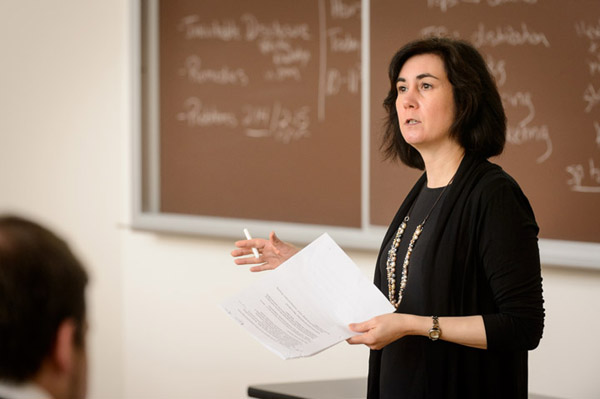3Qs: Banking on the body

Are body products like blood, milk, and sperm marketable commodities, gifts to help others, or both? Kara Swanson, an associate professor of law at Northeastern University with expertise in the history of science and medicine, explains the origins and consequences of the debate in her new book Banking on the Body: The Market in Blood, Milk, and Sperm in Modern America. Here, Swanson discusses the history of body banks, the social consequences of body banking, and the path to a more efficient and less exploitative distribution of human body products.
How have body banks evolved since their establishment in the early 20th century?
What we now call body banks date back to around 1910 and not much earlier, in part because you need a refrigerator or freezer to store almost any body product. The first attempts to bank body products involved breast milk. Here in Boston, for example, there was a nurse going door to door in poor neighborhoods of the city in 1908, looking for nursing mothers to bottle and sell their extra milk. The milk was packed in ice and taken on board the Boston Floating Hospital —the only shipping-based hospital in the U.S.—where infants and children would spend the day. Sickly babies without a maternal source of milk could get life-saving milk from another woman. Later, in Boston and elsewhere, mothers’ milk bureaus bought milk by the ounce from women who expressed their milk on-site under supervision of a nurse.
In 1937, the word “bank” came into the picture. It was then that Dr. Bernard Fantus, working at Cook County Hospital in Chicago, proposed the idea of storing donated blood instead of paying professional donors. This idea was exciting for doctors, who knew that their patients would die if they could not afford a paid donor—the price was steep. By the late ‘30s, hospitals countrywide began opening blood banks.
During World War II, the American Red Cross recruited volunteers from all over the U.S. to donate their blood to treat overseas sailors and soldiers. This program transformed the public perception of donating blood from an unusual, cutting-edge procedure into a commonplace occurrence. The wartime program also brought the term “bank” into common parlance. Mothers’ milk bureaus became milk banks; in the 1950s, doctors started freezing sperm and people started referring to “sperm banks.”
Who is profiting from the marketing of human body products and who is being exploited?
We ask this question today, because we’re primed to think of profits as tied to exploitation. But it is not one that would have been asked in the first half of the 20th century, when body banks began to flourish. Back then, doctors running mother’s milk bureaus believed that the selling women should receive compensation sufficient to ensure good standards of living and relief from financial worry. Every time a woman gave breast milk at the Chicago bureau, for example, she also was given a quart of milk to drink, ensuring that her calcium level remained high. Today, we have become trapped into asking whether we should choose to either ban sales of human body products or allow them to be sold on the free market. While there are many injustices in terms of who is supplying body products and who is receiving them—there is discrimination on the basis of race, class, and sex—I don’t think those are the only two choices available as we seek to get rid of these injustices and improve access to body products. We don’t need to be trapped in the dichotomy between gifts and sales.
Using lessons from history, I argue in my book that we should think more creatively about the sale of body products, rather than assuming that cash payments induce exploitation. What we should do is flip the question, asking how can we conceive of a market in body products that maximizes the benefit for both the buyer and the seller. Replacing current black markets with regulated markets could provide benefits both in the U.S. and abroad.
What are some of the social consequences of body banking?
Our perception of the human body has changed dramatically since the inception of body banks in the early 20th century. One hundred years ago, the human body was considered an integrated, unique entity. Today, we think of the body as comprised of individual interchangeable components—of genes and proteins, of blood, gametes, and organs that we could readily take out of one body and place into the hands of someone else to use.
Banks, it could be said, have helped us reach the most recent step in reformulating what our body is and how it can be used: That is, taking the face from one person and giving it to another. What’s more personal than a face? And yet people allow the faces of loved ones to be transplanted because they have learned to think about the body in this new way.





